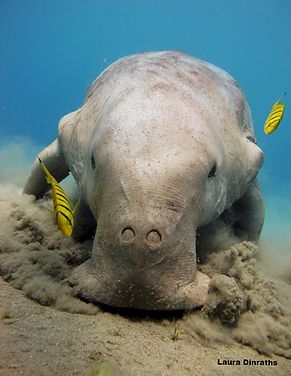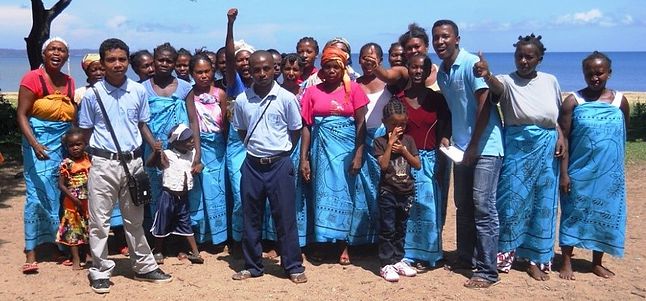Field Update: C3, Madagascar – Summer 2015
July 04, 2015

Background to C3 Madagascar
C3 Madagascar has been working in Nosy Hara Marine Park, in northern Madagascar, since 2009, using the dugong as an iconic marine species to benefit wider marine biodiversity conservation and community development within the region. Our efforts have expanded interest in dugongs nationwide across all marine NGOs since coordinating the first sub-regional UNEP-CMS Dugong meeting for the south-west Indian Ocean in the capital, Antananarivo in 2011.
Recent and ongoing activities:
1. Seagrass surveys:
Annual surveys of key seagrass beds in Nosy Hara Marine Park are underway in June 2015 and data will be compared to baseline data collected since 2010 to assess the health of these systems. C3 staff, university students and Conservation Ambassadors and Junior Ecoguards from the local communities will participate in a refresher Seagrass Watch training course before collecting real-time data.
2. Dugong mortality records:
Fortunately there have been no reports on dugong mortality via the community local park management committees or Madagascar National Parks office for the region over the past 2 years. C3 facilitates quarterly meetings between all relevant stakeholders for reporting on issues of marine and coastal concern.
3. Social marketing:
We have recruited and trained 20 community Conservation Ambassadors within communities of the Marine Park who act as facilitators between the Park staff and community members; relaying important messages back and forth regarding regulations and infractions. Awareness of laws pertaining to dugong protection and understanding of threats to dugongs remains high at over 90%. Similar levels of awareness now exist regarding fishing regulations in the Park (e.g. seasonal and area closures and gear restrictions for octopus, shrimp and crab fisheries). Our Junior Ecoguards network of youth engaged in marine conservation has expanded to 70 members across the remote areas of northern Madagascar. We have reports of youth chastising fishers for capturing sea turtles and believe their voice can really make a difference to attitudes and behaviour within their communities!
To learn more please see our short film on the Junior Ecoguards network.
4. Marine Park interpretative materials:
Information boards with attractive graphics and key facts on dugongs, sharks and sea turtles were installed in 5 locations in the Marine Park last month. They are written in the local Sakalava dialect and are the first such species information boards to go on display in the Park and have already proved to be popular with locals.
5. Community enterprise development:
Communities in our region are struggling to make a living from the ever-decreasing fish stocks in the region and part of our objective is to diversify and expand non-marine based livelihoods. Since 2014 we have launched a women’s tourism bungalow and restaurant to provide guests to the Park with the first ever local accommodation option for tourists wanting to visit the small offshore islands of the Marine Park. In April this year we began construction of a poultry farm to provide a sustainable source of protein and income to local communities.
Also planned for later in 2015 is a women’s handicraft enterprise, involving sale of basketry and souvenir clothing (t-shirts and sarongs) both within the Nosy Hara Marine Park and at retail outlets at the nearest urban centre of Diego. This will be coordinated by C3 and three women’s associations in the region.

6. Improving water supply:
C3 is researching means to either improve or replace existing wells in the community since they fail to provide adequate safe drinking water to the community; in the wet season they are inundated with run-off from surrounding areas and in the dry season they are empty. We hope to help solve this critical issue in the coming year with the assistance of technical experts.